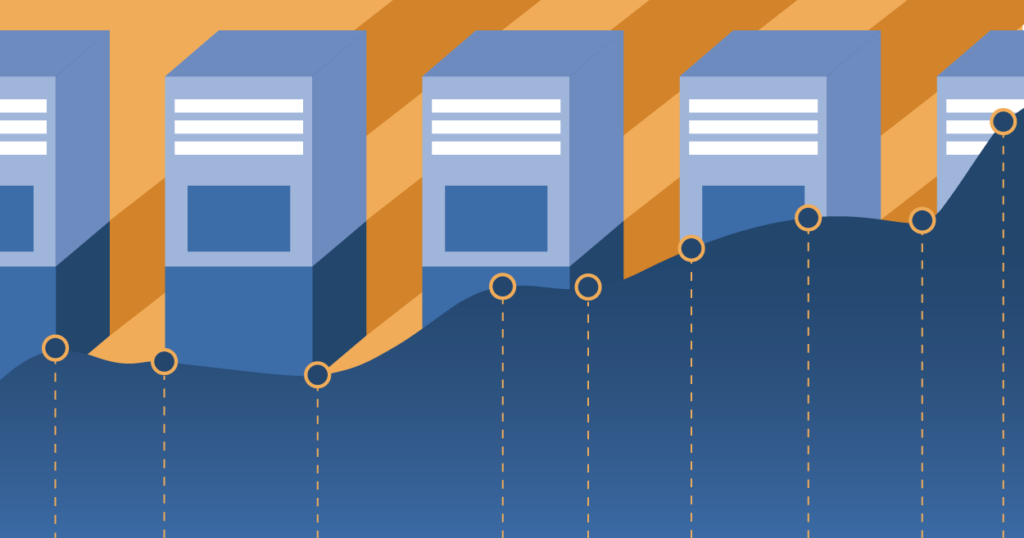Given the current economic climate, many businesses are preoccupied with keeping the lights on and enacting damage control with their employees and customers. For such companies, less regard is being paid to the optimization of a business’ digital presence, even though web-based communication and commerce has been thrust upon us as the new normal. By not actively creating a plan to propel an efficient and effective digital presence, some businesses may be falling into the trap of nearsightedness.
For businesses that are paying attention to how their digital readiness can be optimized, here are five best practices.

1. Strategic hosting to accommodate increased traffic
A company’s website needs to be able to scale to meet increased consumer demand. We’ve all been there, browsing online for goods and services or searching for specific content, only to be met with slow loading times, frustrating site errors, and mismanaged inventory. By using cloud hosting with an elastic database and application servers that can automatically scale, businesses can ensure that visitors have a good experience while minimizing lost profits due to site error or user frustration. Consider using a Content Delivery Network (CDN) for geographic diversity of your web site and improved performance.

2. Secure data management solutions
Now more than ever, data security is a huge priority. Ever-increasing cyber crime frequency and ingenuity has led to ever-increasing regulation, each of which brings a heavy load of technological interventions and diligence to keep up. Having a dedicated Information Security Officer or team is essential in today’s digital business environment. Keep tabs on emerging threats and regulations, as well as the security practices of your vendors through regular audit reviews. For any networks and machines under your own control, ensure you perform a thorough risk analysis and SOC2 audit at least annually, and consistently review, upgrade, and test threat mitigation processes. Consider investing in end-point protection to mitigate the reality of your employees being the weakest link in your security posture. More people working from home means cyber criminals are attacking the home-bound workforce.

3. Tagging and tracking to better understand users/customers
Consistent tagging and tracking is the solid foundation upon which website analytics is built. Each business’s Key Performance Indicators (KPI) will always be different, but it’s important to understand how they have changed in our new normal. Looking for signs that the acquisition funnel is changing is critical to understanding how visitor traffic has shifted, how conversion funnels have changed, and addresses preconceived assumptions regarding customer value. Successful sites also drive traffic to themselves by understanding how their users and customers feel about the overall experience; a negative experience with a site can be all a potential customer needs to not return.

4. Reviewing payment gateway options
As sales volume changes with the shift from in-person to online purchasing, a review of payment gateway partners may be in order. Different payment gateway providers have varying pricing levels by sales volume, and a website that found its original partner at a smaller volume pricing tier may benefit from reviewing its options at the new normal level of business. Electronic wallet payment options may be something to consider introducing as well, such as adding PayPal, ApplePay, Amazon Payments, AliPay, or bitcoin for broader reach.

5. Combining disparate databases for enhanced analytics
As non-essential businesses begin to reopen, product and category-level sales reports will be best understood when they can be viewed both on a channel-specific basis as well as combined to assess monthly and year-over-year comparisons. While many companies compile marketing, advertising, online sales, and brick-and-mortar sales data in disparate databases, they should be brought together for analysis and forecasting. Often, companies know they have the data to optimize their offerings but lack the right tools to efficiently organize and analyze that data. Creating a “big data” style infrastructure facilitates the ability to perform analytics that will gain valuable insights from the combined sets of data.
“Winter is a season of recovery and preparation.” – Paul Theroux
Responding to customer needs for a seamless and enjoyable experience amid this crisis sets smart businesses up for enduring and future successes post COVID-19. When customer behavior stabilizes into the new normal, companies who have been proactive and continuing to push forward with a plan for efficiency and intelligence will be poised for success.
Fulcrum’s Managed Services allow organizations to deploy scalable websites and test big data strategies without capital investment or staffing impact, giving clients rapid and cost-effective access to technology, platforms, software, and expertise. Our Tagging and Tracking consulting services help companies quickly and efficiently ramp up reporting and insights into website and marketing effectiveness. To learn more about how Fulcrum can set your business up for long-term success, contact us today.



